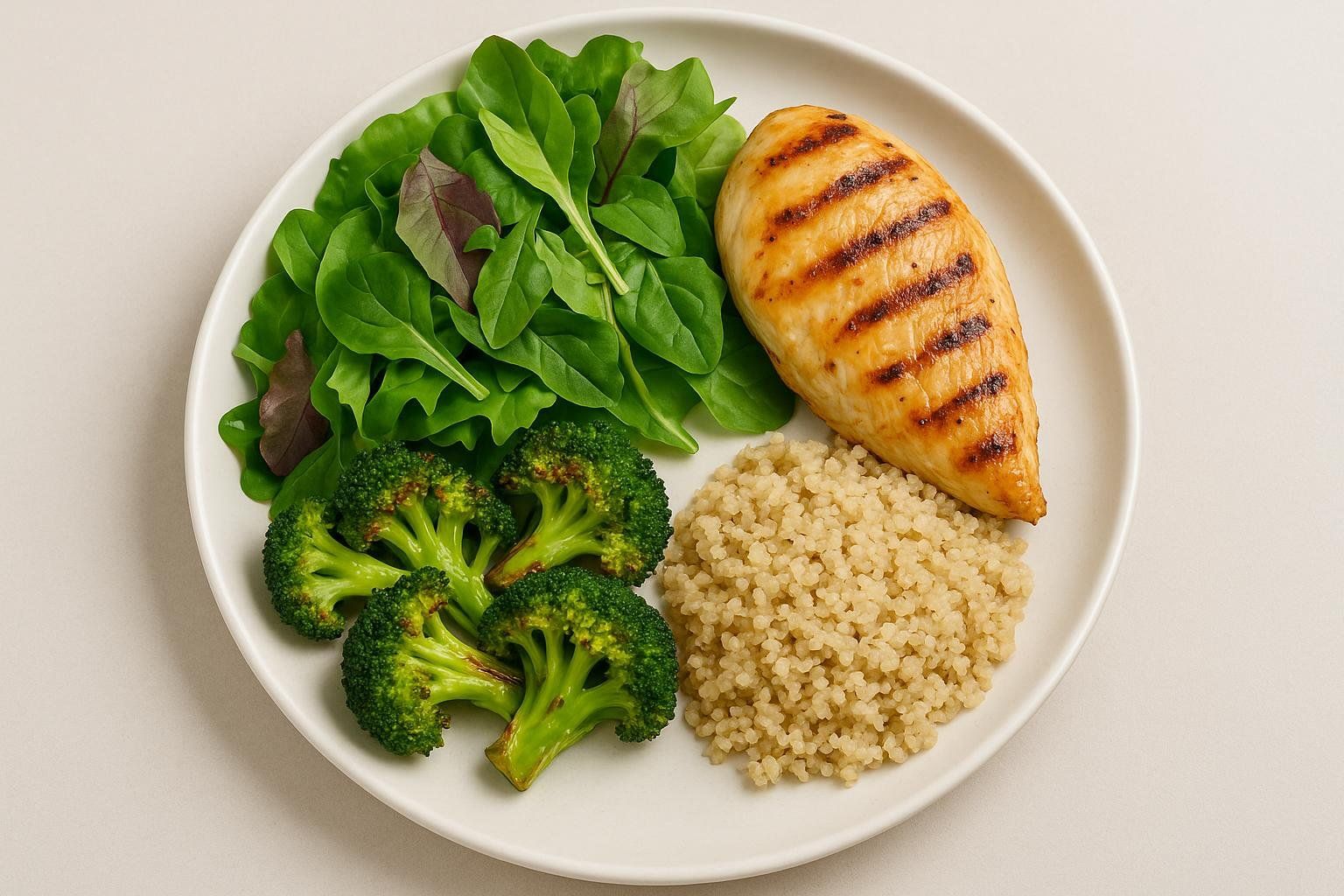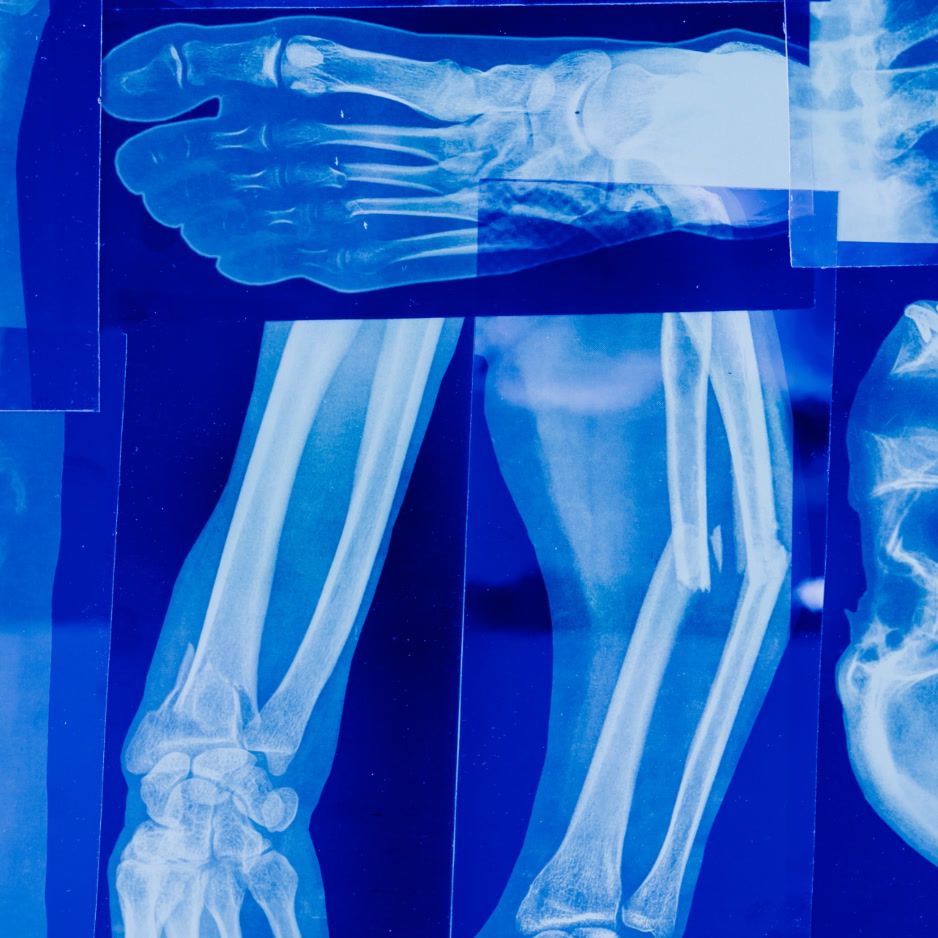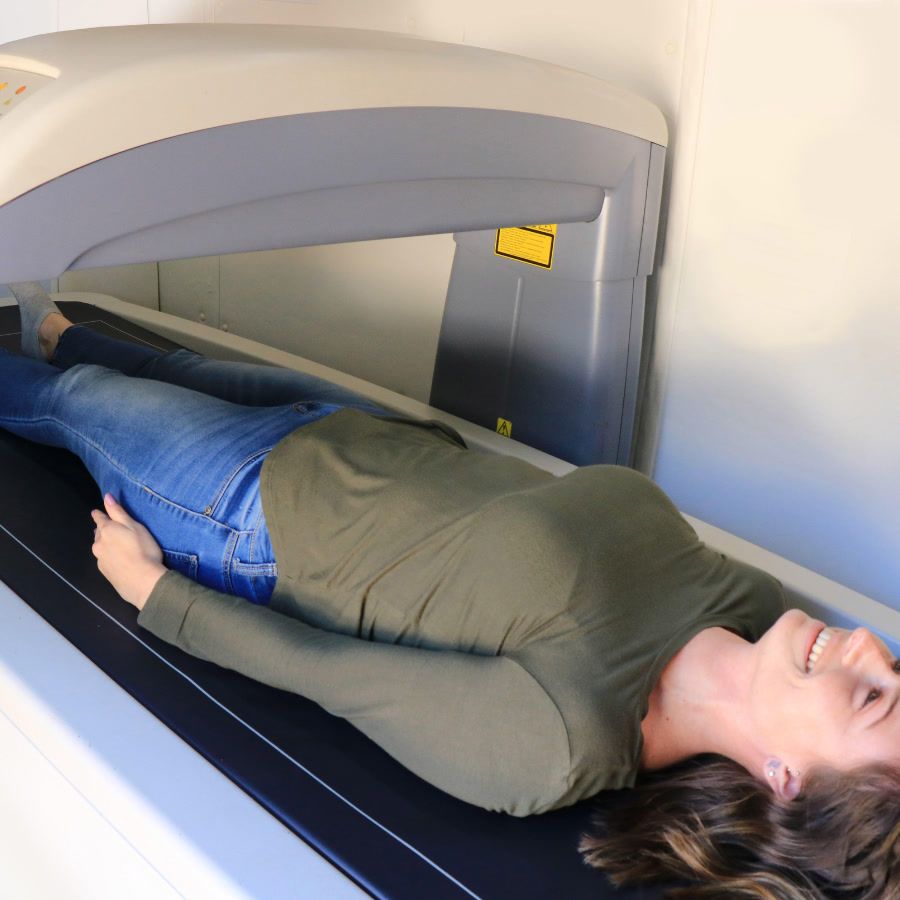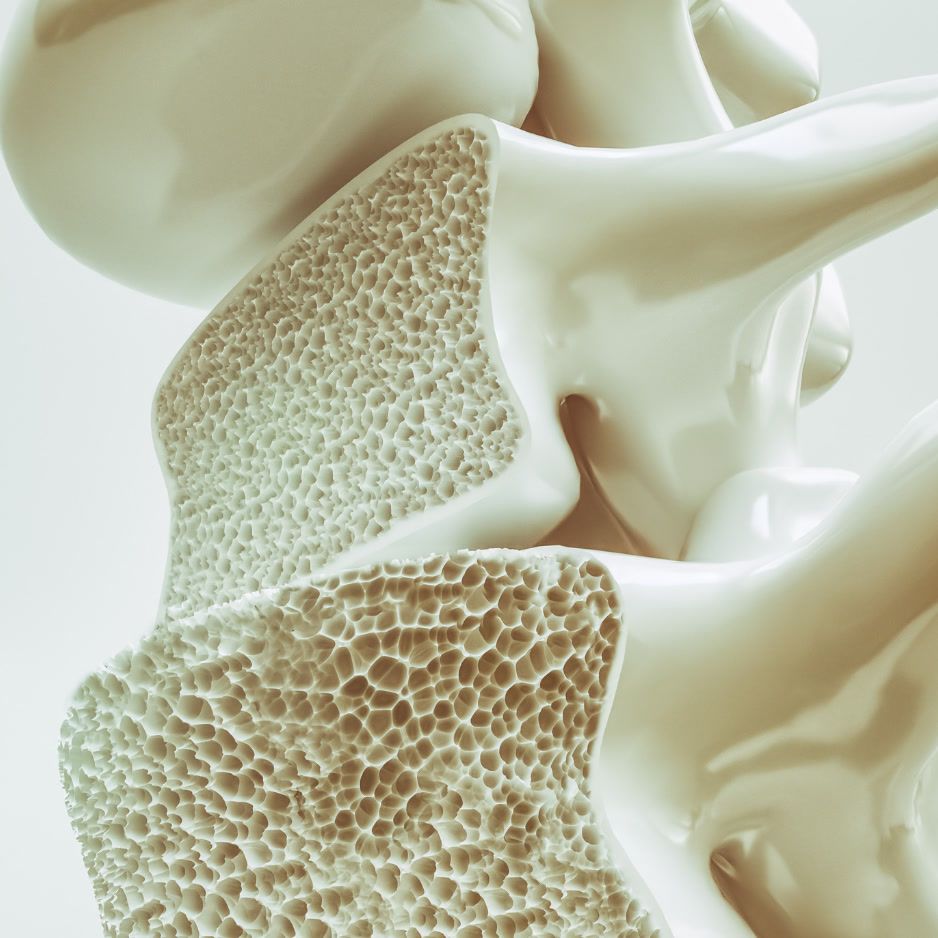How to Stay Healthy: A Science-Backed Blueprint for Lifelong Wellness

How to Stay Healthy: A Science-Backed Blueprint for Lifelong Wellness
Your doctor says to eat better and exercise more. Your coworker swears by intermittent fasting. Social media influencers promote the latest superfood. Sound familiar? With so much conflicting health advice, it's no wonder that despite Americans' $4.9 trillion annual spending on healthcare (CMS reports), chronic disease rates continue to climb.
The reality is simpler than the noise suggests. True health comes down to five evidence-based pillars: balanced nutrition, regular movement, quality sleep, stress management, and preventive monitoring. Master these fundamentals with small, consistent habits, and you'll create measurable improvements in energy, body composition, and overall well-being that compound over time.
This comprehensive guide delivers strategies that work for busy professionals, families, and anyone committed to thriving at every age. Using measurable data to personalize your approach transforms guesswork into precision.
The Foundation: Understanding What "Healthy" Actually Means
True health extends far beyond the absence of disease. The World Health Organization defines health as "a state of complete physical, mental and social well-being"—a holistic view that encompasses your body composition, energy levels, mental clarity, and ability to handle life's challenges.
Key Health Indicators That Matter:
| Indicator | Why It Matters | Optimal Range |
|---|---|---|
| Body Fat Percentage | Excess fat, especially visceral fat, drives inflammation and chronic disease | Varies by age and sex. See detailed charts for specific targets. |
| Muscle Mass | Preserves metabolism, bone density, and functional independence | Varies by individual; aim to maintain or increase relative to body fat |
| Cardiovascular Fitness | Predicts longevity and daily energy levels | Resting heart rate 60-100 bpm (American Heart Association); age-adjusted VO₂ max targets |
| Sleep Quality | Enables recovery, immune function, and mental health | 7-9 hours of restorative sleep (National Sleep Foundation) |
| Stress Resilience | Affects all other health markers | Develops effective coping strategies; stress levels do not chronically overwhelm |
A key advantage of focusing on these core areas is that improvements in one often cascade into the others. Better sleep enhances workout recovery, which builds muscle, which improves metabolism—creating a positive feedback loop that accelerates overall wellness.
Pillar 1: Nutrition That Fuels Performance
A sustainable approach to nutrition, like the 80/20 rule, is more effective for long-term success than highly restrictive diets. Eat nutrient-dense whole foods 80% of the time, leaving room for flexibility and enjoyment the remaining 20%.
Build Your Plate Around Whole Foods

The NHS recommends a balanced diet that includes fruits, vegetables, legumes, nuts, and whole grains. Adults should aim for at least 5 portions (400g) of fruits and vegetables daily to reduce the risk of heart disease, stroke, and certain cancers.
- Fill half your plate with non-starchy vegetables like spinach, broccoli, and peppers
- Dedicate one quarter of your plate to lean protein such as fish, chicken, beans, or tofu
- Use the remaining quarter for complex carbohydrates like quinoa, sweet potatoes, and brown rice
- Add healthy fats through olive oil, nuts, or avocado
Prioritize Protein at Every Meal
Research on protein intake and resistance training consistently shows that higher protein intake (1.6-2.2g per kg body weight) combined with resistance training produces the largest improvements in body composition. For most adults, this translates to including a palm-sized portion of protein with every meal.
Quick Protein Sources:
- Breakfast: Greek yogurt, eggs, protein smoothie
- Lunch: Grilled chicken, lentils, cottage cheese
- Dinner: Salmon, lean beef, tempeh
- Snacks: Nuts, cheese, protein bars

Maintain Strategic Hydration
Proper hydration affects every aspect of physical and mental performance, from maintaining body temperature to enabling nutrient transport throughout your body. Dehydration is often the hidden culprit behind afternoon fatigue. According to NHS guidelines, aim for:
- 6-8 glasses of fluid daily
- Water, lower-fat milk, and lower-sugar drinks like tea and coffee are healthy choices
- Extra during exercise or hot weather
What to Limit:
- Salt: Keep intake under 6g daily for adults (NHS)
- Added sugars: Free sugars should be less than 5% of total energy intake
- Processed foods: Prioritize foods with simple ingredient lists and minimal processing
Pillar 2: Movement That Builds Resilience
Smart Guidelines for Effective Exercise
You don't need to become an athlete to reap massive health benefits. The established guideline is 150 minutes of moderate-intensity exercise OR 75 minutes of vigorous exercise per week. Recent research in JAMA supports this recommendation, finding significant reductions in waist circumference and body fat, with additional benefits beyond 250 minutes.
Your Weekly Movement Blueprint:
Cardio (150+ minutes moderate or 75+ minutes vigorous weekly):
This can be achieved with:
- Moderate options: 3 x 50-minute brisk walks, 5 x 30-minute bike rides at conversational pace
- Vigorous options: 2 x 25-minute HIIT sessions + 1 x 25-minute run, 3 x 25-minute high-intensity cycling
- Mixed approach: 2 x 45-minute easy workouts + 1 x 20-minute HIIT session
Strength Training (2-3 sessions weekly):
- Focus on compound movements: squats, deadlifts, push-ups, rows
- Target all major muscle groups (legs, back, chest, shoulders, and arms)
- Aim for 8-12 repetitions per exercise
Daily Movement (NEAT):
- Take stairs instead of elevators
- Park further away or get off public transport one stop early
- Stand and stretch every hour during work
- Target 8,000-10,000 steps daily
Progressive Overload: The Key to Continuous Improvement
Your body adapts to whatever you consistently demand of it. To keep making progress, you must gradually increase the demands on your body—a principle known as progressive overload. Gradually increase:
- Weight: Add 2.5-5 pounds when you can complete all sets easily
- Reps: Increase by 1-2 repetitions per week
- Time: Add 5 minutes to cardio sessions monthly
- Intensity: Progress from walking to jogging to running
New to exercise? Start with our Strength Training for Beginners guide, then progress to more advanced techniques.
Pillar 3: Sleep That Rebuilds
Studies on sleep deprivation show that short sleep correlates with greater visceral fat accumulation and impaired muscle recovery. Yet quality matters as much as quantity.

Sleep Optimization Protocol
- Consistent timing: Go to bed and wake up at the same time daily (yes, even weekends)
- Dark environment: Use blackout curtains or an eye mask
- Cool temperature: Keep bedroom between 65-68°F (18-20°C)
- Tech curfew: Stop screens 60 minutes before bedtime
- Wind-down routine: Try reading, stretching, or gentle breathing exercises
Simple tips for better sleep:
- Morning sunlight exposure within 30 minutes of waking
- Afternoon caffeine cutoff (varies by individual, typically 2 PM)
- Evening relaxation techniques, such as gentle self-massage
Pillar 4: Stress Management That Builds Resilience
Chronic stress elevates cortisol, which promotes fat storage around your midsection and breaks down muscle tissue. Managing stress through evidence-based techniques significantly improves both mental and physical health outcomes.

Actionable Stress Reduction Techniques
- Box breathing: Inhale 4 counts, hold 4, exhale 4, hold 4 (repeat 5 cycles for immediate calm)
- Take a 20-minute walk outdoors: Research from Harvard Health shows spending 20-30 minutes in nature yields the most significant drop in cortisol levels
- Progressive muscle relaxation: Tense and release each muscle group from toes to head
- Practice the "5-4-3-2-1" grounding technique: Name 5 things you see, 4 you can touch, 3 you hear, 2 you smell, 1 you taste
- Gratitude practice: Write down 3 specific things you're thankful for daily
- Use a simple journaling prompt: "What went well today?" before bed to shift focus to positive events
Long-term Stress Management
- Build and maintain strong social connections
- Engage in hobbies that bring you joy
- Consider meditation apps like Headspace or Calm
- Seek professional support when needed
Pillar 5: Preventive Care and Health Monitoring
Know Your Numbers: The Power of Data-Driven Health
Regular monitoring provides objective data to guide your health decisions and catch problems early when they're most treatable.
Essential Health Screenings:
| Test | Frequency | Why It Matters |
|---|---|---|
| Blood pressure | Every 2 years (or more if elevated) | Hypertension is the "silent killer"—often no symptoms |
| Cholesterol panel | Every 5 years (or more frequently if abnormal) | Predicts cardiovascular disease risk |
| Blood glucose/HbA1c | Every 3 years (annually if prediabetic) | Early detection of diabetes |
| Body composition | Every 3 months | Tracks muscle gain and fat loss more accurately than weight |
| Mammogram/colonoscopy | Typically starts at age 40-45; consult your doctor for personalized frequency | Early cancer detection saves lives |
Understanding Body Composition: Beyond the Scale
Traditional metrics like BMI can be misleading—a muscular athlete might be classified as "overweight" while someone with unhealthy high body fat and low muscle mass might still fall within a "normal" BMI range. Body composition analysis provides a detailed breakdown of fat, muscle, and bone, offering a more accurate picture of health than weight alone.
Why It Matters:
- Visceral fat around organs is far more dangerous than subcutaneous fat under the skin
- Muscle mass preservation becomes critical after age 30 (we lose 3-5% per decade)
- Bone density affects fracture risk and long-term independence
Measurement Options:
| Method | Accuracy | Pros | Cons | Typical Cost |
|---|---|---|---|---|
| DEXA scan | Gold standard (±1% error) | Regional fat & muscle, visceral fat, bone density; quick (≈ 6 min) | Requires a visit to a specialized facility for clinical-grade accuracy | View Current Pricing |
| BIA scales | Moderate (±3–8% error) | Fast, portable, common in gyms | Results are highly sensitive to hydration levels and recent food intake | Varies |
| Skinfold Calipers | Moderate if done by expert | Inexpensive, field-friendly | User skill-dependent; estimates only subcutaneous fat | Low to moderate |
The Role of DEXA in Body Composition Analysis
DEXA uses two low-energy X-ray beams to differentiate bone, lean tissue, and fat with exceptional precision. A key advantage of DEXA is its ability to quantify both visceral fat and bone density in a single assessment. DEXA scans provide the most accurate picture of what's happening inside your body:
- Track muscle gain even when weight stays stable
- Monitor dangerous visceral fat reduction
- Assess bone density for fracture prevention
- Compare regional changes (losing belly fat while building leg muscle)
Recommended scanning frequency:
- Starting out: Every 3 months to track initial changes
- Maintenance: Every 6 months to ensure you're staying on track
- Specific goals: Monthly during focused training or weight loss phases
Because research shows visceral fat accumulation increases health risks, DEXA's ability to measure it in precise terms (pounds or kilograms) offers a critical metric to track over time. You can learn more in our guide to healthy visceral fat levels.
Age-Specific Health Strategies
How to Stay Healthy as a Busy Professional
Top Challenges: Time constraints, stress, irregular schedules
Priority Focus: Building sustainable routines, stress management, maintaining muscle mass
Quick Wins:
- Meal prep on Sundays for grab-and-go nutrition
- Use lunch breaks for 20-minute walks or gym sessions
- Practice the "minimum viable workout"—even 15 minutes counts
- Monitor stress levels and schedule recovery time like important meetings
How to Stay Healthy with a Family
Top Challenges: Balancing family needs, modeling healthy behaviors, time management
Priority Focus: Family-friendly activities, meal planning, consistent sleep
Family Health Strategies:
- Make physical activity fun—hiking, bike rides, dance parties
- Involve kids in meal planning and cooking
- Create phone-free family meal times
- Establish consistent bedtime routines for everyone
- Model stress management and self-care
How to Stay Healthy While Aging
Top Challenges: Muscle loss, bone density, energy levels, chronic disease prevention
Priority Focus: Strength training, balance, social connections, preventive care

Aging Gracefully:
- Research on protein and aging muscle health suggests a minimum of ~1.2g of protein per kg of body weight to combat age-related muscle loss. Those doing strength training need 1.6-2.0g per kg to maximize muscle maintenance and growth.
- Include balance and flexibility work to prevent falls
- Stay socially engaged—loneliness affects physical health
- Regular health screenings become more important
- Focus on functional fitness—movements that help daily life
For more insights on healthy aging, explore our guide to strengthening bones through exercise.
Troubleshooting Common Health Challenges
Overcoming Time Constraints
Many adults feel overwhelmed by their schedules, making it challenging to prioritize health activities. Here are time-efficient solutions:
- High-Intensity Interval Training (HIIT): Maximum benefits in 20 minutes
- Bodyweight exercises: No commute to the gym required
- Walking meetings: Combine work calls with movement
- Meal prep on Sundays: 2 hours saves 30 minutes daily throughout the week
- Activity stacking: Listen to podcasts while walking or do squats while watching TV
- Prepare healthy snacks while cooking dinner: Maximize kitchen time for multiple health benefits
When Progress Stalls
The All-or-Nothing Mindset
It's common to fall into a cycle of restriction and overeating when you try to change everything at once. To break this pattern:
- Focus on mastering one small change for 2-3 weeks before adding another
- Celebrate small wins to build confidence
- Remember that consistency beats perfection
Focusing on Short-Term Results
When you chase quick wins instead of sustainable habits, progress often stalls:
- Set 3-month milestones instead of 30-day transformation goals
- Track weekly progress rather than daily fluctuations
- Focus on building systems, not just achieving outcomes
Inaccurate Progress Tracking
The scale only shows total weight, not whether you're losing fat and gaining muscle:
- Use body composition analysis to see the full picture
- Take body measurements and progress photos
- Remember that muscle weighs more than fat but takes up less space
Portion Size and Exercise Intensity Misjudgments
Most people underestimate portion sizes and overestimate exercise intensity:
- Measure and log food portions for two weeks to calibrate your perception
- Use a heart rate monitor during workouts
- Track perceived exertion on a 1-10 scale
Recovering from Setbacks
Occasional setbacks are a normal part of the process. The key is getting back on track quickly:
Reset Protocol:
- Stay calm: One bad meal doesn't ruin everything
- Identify the trigger: Stress? Lack of planning? Social pressure?
- Adjust your environment: Remove temptations, prep healthy options
- Start small: Just focus on the next healthy choice, not perfect weeks
Advanced Strategies for Optimization
Personalization Through Data
As you master the basics, you can fine-tune your approach:
Nutrition Periodization:
- Higher carbs on training days for performance
- Moderate deficits during fat loss phases
- Maintenance calories during muscle-building phases
Exercise Progression:
- Periodized training with planned intensity and recovery cycles
- Movement quality assessment and correction
- Sport or activity-specific training
Recovery Optimization:
- Heart rate variability monitoring for training readiness
- Stress and sleep tracking for lifestyle adjustments
- Professional massage or physical therapy for injury prevention
Strategic Supplementation
Supplements can enhance a solid foundation but never replace proper nutrition:
Evidence-Based Options:
- Vitamin D3: Deficiency is common, as most Americans consume less than recommended amounts, particularly in winter
- Omega-3 fatty acids: If you don't eat fish 2-3 times weekly
- Creatine monohydrate: For strength training and cognitive benefits including improved memory and processing speed
- Magnesium: Can improve sleep quality and muscle recovery
Always consult with a healthcare provider before starting new supplements.
Your Path to Lasting Health
Staying healthy isn't about perfection—it's about progress. The compound effect of small, consistent habits creates remarkable transformations over time. Each positive choice builds momentum for the next, creating an upward spiral of health improvements.
Creating Your Personal Health Action Plan
Before making changes, first assess your starting point:
Quick Health Audit:
- Energy levels: Rate 1-10 throughout the day
- Sleep quality: How often do you wake rested?
- Physical capability: Can you walk up 3 flights of stairs without breathlessness?
- Stress management: How well do you handle daily pressures?
- Body composition: When did you last measure beyond weight?
Example Priority Sets:
Don't try to change everything at once. Pick 3 areas that will give you the biggest impact:
For weight loss: Protein at every meal + 150 minutes cardio weekly + 7-hour sleep target
For strength building: 3x weekly strength training + adequate protein + stress management
For energy improvement: Consistent sleep schedule + morning sunlight + reduced processed foods
Set SMART Goals with Tracking:
Instead of: "I want to get healthy"
Try: "I will complete 3 strength workouts per week and track my progress with monthly body composition scans"
Tracking Tools:
- Nutrition: MyFitnessPal, Cronometer, or a simple food journal
- Exercise: Fitness apps, wearables, or a basic workout log
- Sleep: Sleep tracking devices or a sleep diary
- Body composition: Regular DEXA scans or other measurement methods
A 30-Day Quick Start Plan
Ready to begin? Here's a practical month-long progression:

Week 1: Foundation Building
- Daily: Eat protein with every meal, take a 20-minute walk, sleep 7+ hours
- Weekly Action: Schedule a body composition baseline measurement
Week 2: Add Structure
- Daily: Continue week 1 habits plus add vegetables to lunch and dinner, do 5 minutes of stretching before bed
- Weekly Action: Plan and prep 3 healthy meals for next week
Week 3: Increase Intensity
- Daily: Continue previous habits plus replace one walk with a 20-minute strength session, practice 5 minutes of stress management
- Weekly Action: Set up your home workout space or visit a local gym
Week 4: Optimize and Plan
- Daily: Continue all previous habits plus increase walking time to 30 minutes or add a second strength session, track everything for 3 days
- Weekly Action: Schedule your next body composition scan and plan month 2 goals
Taking Action: Your Next Steps
Immediate Actions (This Week):
- Choose your first habit: Pick one small change from this guide and commit to it for 7 days
- Set up your environment: Remove one unhealthy temptation and add one healthy option
- Find your accountability: Tell someone about your goals or join a community. Consider a workout buddy for exercise motivation, a meal prep partner to share cooking responsibilities, health professionals for guidance, or a tracking community to share progress and challenges
- Get your baseline: Schedule a comprehensive health screening including body composition analysis—book your baseline body composition analysis to track your transformation with precision
Short-term Goals (1-3 Months):
- Establish consistent exercise routine (150+ minutes weekly)
- Implement meal planning and preparation system
- Optimize sleep habits for 7-9 hours nightly
- Track progress with monthly measurements
Long-term Vision (1+ Years):
- Maintain or improve body composition as you age
- Build resilience against chronic diseases
- Model healthy behaviors for family and friends
- Enjoy sustained energy and vitality throughout your life
Every small choice compounds over time, creating the foundation for a vibrant, energetic life at any age. The path to lasting health begins with your next decision. Start where you are, apply what you've learned, and commit to consistent action.


